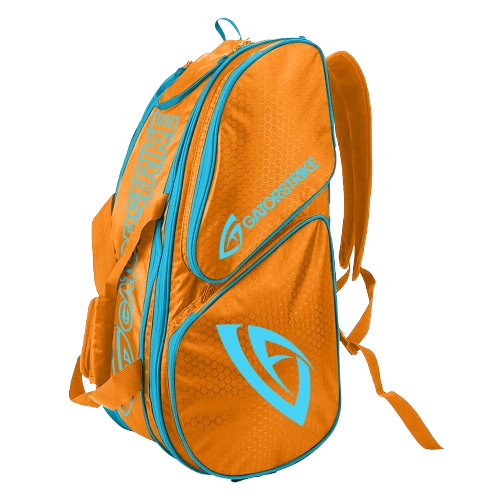
Discover the Perfect Balance Between Control and Power on the Court
Share
Control can help players place the ball with accuracy, and power creates the speed and force. The most skilled players can master both to take the court to victory.
In the Introduction, The Technique of Precision Meets Power
In the sport of pickleball, mastering it isn't just about skill--it's about finding the perfect combination of control and strength. This dynamic, commonly called "pickleball controlling vs. power," separates average players from the best. It's the combination of precise shot placement and explosive shots that helps you beat your opponents. If you're delicately putting a shot into the kitchen or slamming an incoming shot into the air, knowing how to control both forces is essential to a better performance in matches.
Understanding the power of Pickleball: The Force of Purpose
Power can make your shots quick, violent, and hard to recover. But how much power is there without control? This is the recipe for mistakes.
- Power paddles such as those of the GatorStrike Pro Control paddle offer a responsive surface as well as a more robust core for fast-paced drive.
- Great ideal for base smashes or overhead volleys and quick finishing.
- Pickleball's power comes in the hip's rotation and weight shift and paddle speed--not only arm strength.
Tip: Utilize force strategically in order to put your opponents in check, and not just to get them hit hard.
The role of control The Role of Control
Control is the basis for playing the game of softness, which is essential in rallies of pickleball. Control keeps your shots within bounds and positioned strategically.
- Control paddles, such as those of the Precision Striker paddle, provide lightweight handling and a great touch.
- Ideal to use for kitchen droplets drops, as well as precise resets.
- Control can help you prolong rallies, set up attacks, as well as create mistakes by putting yourself in the right position.
Tips: Training in playing softball is equally crucial as gaining strength. It is the consistency that wins games.
Paddle Technology: The Choice between Power and Control
In the case of control of pickleball vs. power, the paddle can make an enormous difference.
|
The Feature |
Control Paddle |
Power Paddle |
|---|---|---|
|
Weight |
Lighter (7-7.5 oz) |
Heavier (8+ oz) |
|
Material |
Carbon Fiber/Graphite |
Composite/Fiberglass |
|
Core |
Thicker Polymer |
Thinner to rebound |
|
Use |
Soft play, dinks Resets, soft play |
Drives, slams, put-aways |
Technique For Mastering Both
If you're training for exercises or playing games, make sure to apply these methods:
For Control:
- Reduce your backswing
- Make use of a looser grip
- Concentrate on the paddle angle and wrist
For Power:
- Engage your hips and legs
- Follow through completely
- Tighten grip at contact for impact
Mix shots in matches to keep opponents off their feet. The most successful players are flexible and unpredictable..
Physical Training: Create the Engine for both
Your body functions as your source of power and control instrument:
- Strength Training (Power): Squats and resistance bands, and thermometrics
- Agility and Balance (Control): Ladder exercises, yoga, and dynamic stretching
- Forearm and wrist exercises increase the softness of touch as well as explosive shots.
Combining both types of instruction improves your control and improves the synergy between them.
Strategy: When to use Control vs. Power
GameIQ is essential to blend power and control in a way that is effective.
|
Scenario |
Use Control |
Make Use of Power |
|
Opponent near the net |
Soft dink |
|
|
Opponent deep |
Drop shot |
Drive |
|
On defense |
Reset shots |
|
|
On the offensive |
|
Overhead/smash |
Being aware of when to change modes mid-point will help you gain a tactical edge. The ability to adapt is crucial.
Pressure Moments: Maintaining Balance Under Stress
The most difficult part of mastering the control and power of pickleball is executing it under stress. When adrenaline is high, many players hit too hard or play too riskily.
Here's how to keep your edge:
- Control your breathing
- Concentrate on the shot you choose Not speed
- Visualize success before the big points
Mental training is as important as physical training, especially in emergencies.
Gear that supports your Game
To ensure control and power, put your money in top-quality equipment:
- GatorStrike Pro Control Paddle - Perfect for those looking to achieve control and balance.
- The Precision Striker paddle- Lightweight and made for finesse.
- GatorStrike Paddle Weight Tape - Improves control thanks to improved paddle handling.
- GatorStrike Balls for Pickleballs- with a consistent bounce for consistent power and quality of placement.
- GatorStrike Clothing and Snapback Hat - Its comfortable design helps keep you engaged during intense matches.
Final Thought
The key to winning in pickleball isn't choosing between power and control; it's about mixing both of these skills using smart equipment and a more effective strategy. If you prefer soft touch or explosive drives, the top players can adapt and change with every game.
With the proper mental attitude, training along with GatorStrike paddles, you'll be able to master how to balance power vs control in pickleball--and begin winning by using force and precision.
FAQs
Should you use either a control paddle or a power paddle?
It all depends on the style you prefer. Control paddles assist with positioning, while power paddles create the force. Many experienced players prefer using a hybrid paddle.
Can I swap paddles during a game for control or power?
No. The rules of the game require you to use only one paddle during an entire game, so you must choose one that is balanced.
How can I increase the power of my pickleball skills?
Utilize the correct exercise, weight transfer, and follow-through. Strength training can also help.
Which paddle would GatorStrike suggest for a control vs power mix?
The Pro Control Paddle is made to accommodate players who need power and precision in their sport.

















